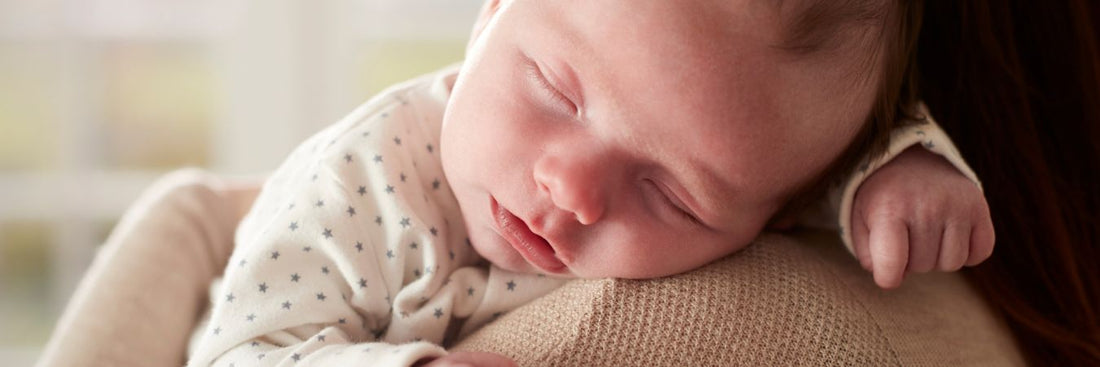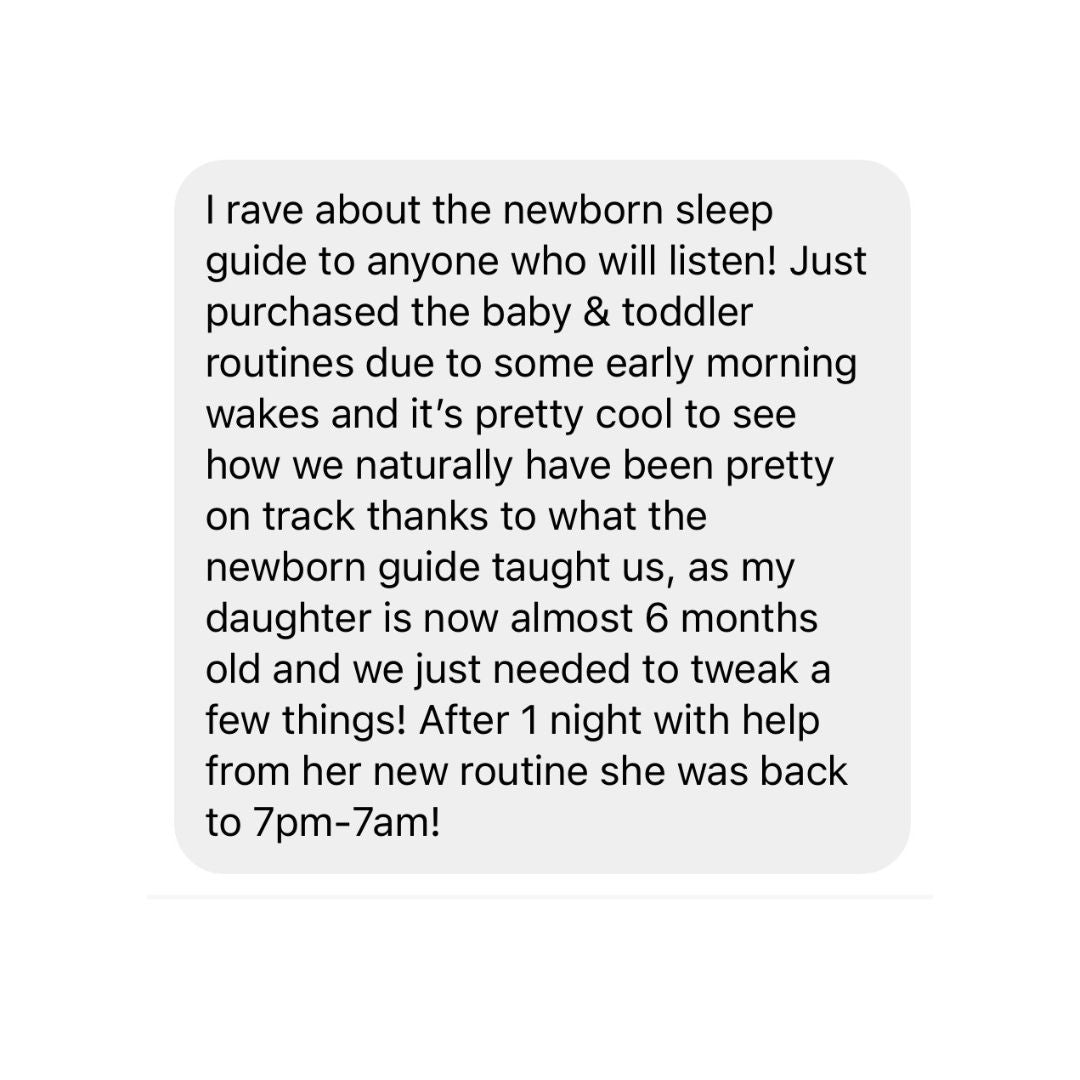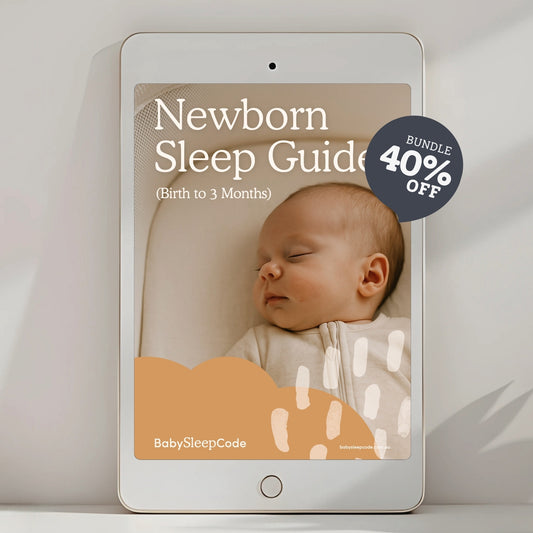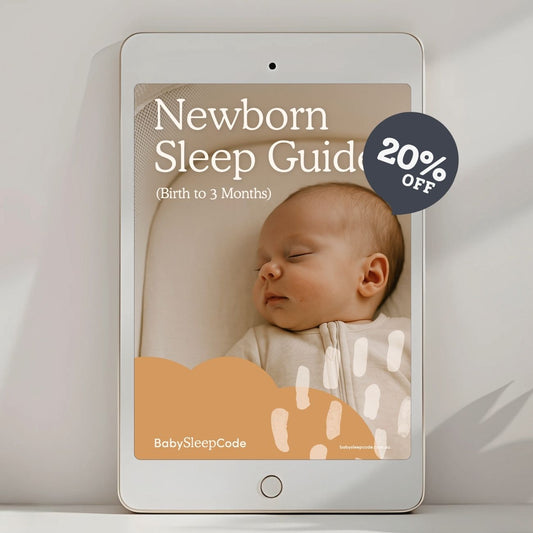Understanding newborn sleep is essential for helping your little one develop great sleep habits. While the sleep patterns of a newborn are vastly different from those of older babies and adults, this natural variation is a key part of their growth and development. In this blog, we’ll explore the different stages of the newborn sleep cycle, why they wake so often, and how you can support better sleep for both you and your newborn baby.
How long is a newborn sleep cycle?
Newborns typically experience sleep cycles that last between 50 to 60 minutes, much shorter than the 90-minute cycles seen in adults. This shorter cycle is a normal part of infant sleep development and is linked to their need for more frequent feeds. During these cycles, newborns will pass through two primary stages of sleep: Active Sleep (REM) and Quiet Sleep (Deep Sleep).
Stages of newborn sleep cycle: REM versus Deep Sleep
Newborn sleep is evenly split between Active Sleep (REM) and Quiet Sleep (Deep Sleep), with about 50% of their sleep spent in each stage. These two stages of sleep play different but crucial roles in your baby’s development:
- Active sleep (REM): Newborns spend a significant portion of their time in Active Sleep, also known as REM sleep (Rapid Eye Movement). Unlike adults, newborns don’t experience muscle paralysis (known as atonia) during REM sleep, so they are free to move. This is why your baby may make noises, twitch, briefly cry, grunt, or even smile during sleep. It is important to remember that these movements are entirely normal and not a sign that they are uncomfortable or awake.
- Quiet sleep (deep sleep): During Quiet Sleep, also called deep sleep, your baby’s body and brain are resting and repairing. Their muscles are relaxed, and their breathing becomes deeper and slower. Deep sleep is crucial for physical and neurological development. At this stage, your baby will appear still and peaceful, with minimal movement.
As babies grow, the amount of time spent in each stage of sleep begins to shift. By the time babies reach 6 months, their REM sleep typically drops to around 30-35% of their total sleep. By the time they are 3 years old, they will have closer to the adult proportion of about 20-25% of REM sleep.
Why do newborn babies seem restless during sleep?
Newborn babies do not experience atonia—the muscle paralysis that occurs in adults during REM sleep. In adults, this atonia prevents us from physically acting out our dreams. However, newborns lack this mechanism, meaning they can move freely during REM sleep. This is why they may jerk their limbs, twitch, briefly open their eyes, grunt, smile, or even cry during sleep.
By 3-4 months, while they are still spending a significant amount of time in REM sleep, the movements start to become less obvious. This happens because their nervous systems are maturing, and their movements become more coordinated and less jerky. Even though atonia isn’t fully developed until later (around preadolescence), you’ll notice fewer jerky movements during sleep, and your baby may appear to sleep more soundly as they get older.
Why does my newborn wake after one sleep cycle?
It’s common for newborns to wake after completing a sleep cycle, particularly during the day. This is often called catnapping and usually happens when your baby is in REM sleep, a lighter sleep stage. During the day, sleep pressure is lower, meaning your baby hasn’t built up enough need for sleep to stay down for longer stretches.
Here are some simple tips to help your newborn sleep longer than one sleep cycle:
- Block out the light: A dark room signals to your baby that it’s time to sleep, helping them settle back down to sleep between sleep cycles more easily.
- Use white noise: It mimics the womb environment and helps babies stay asleep by creating a consistent background sound.
- Get the timing right: Following age-appropriate newborn wake windows ensures your baby is tired enough to sleep longer, preventing short naps.
If you're struggling with catnapping and looking for a guide to help your baby sleep for longer stretches, our Newborn Sleep Guide is packed with expert advice. With tips on establishing routines and creating the ideal sleep environment, this guide has already helped thousands of parents get their babies on track for better sleep day and night.
Here’s what parents are saying:
"Having this guide from 3 weeks of age has been a life saver. The routine has been so easy to follow and helped me feel comfortable planning my days. My baby is now 11 weeks old and has just slept 12 hrs straight 3 nights in a row!" – Jacqs. T
"I bought this guide when my baby was 3wo. It changed everything, more predictable days and a happier baby. The routines are necessary and it’s amazing how awake windows are right on the spot! Since my baby was 10wo started to sleep all night without feeds!" – Diana
How to tell when your baby is awake or in active sleep
As a new parent, it can be tricky to determine whether your baby is awake or just in Active Sleep. Here are some key signs to help you tell the difference:
- Active sleep (REM): Your baby might be twitching, grunting, or moving their limbs. Their eyes may dart under their eyelids, and they may make small noises. Despite these signs, they are still asleep and not in distress.
-
Awake: When your baby is awake, they’ll have their eyes open, and they may start crying, looking for attention, or showing signs of hunger.
Understanding the difference between Active Sleep and being awake will prevent you from prematurely disturbing your baby during peaceful sleep.
Why is my newborn so noisy during sleep?
Newborns are often noisy sleepers, and there are a few reasons for this:
- Active sleep: As mentioned, during Active Sleep (REM sleep), your baby’s body is still developing the ability to regulate movements. You may hear grunting, twitching, or fast breathing. These sounds are a normal part of sleep and not a sign of discomfort.
- Obligate nose breathers: Newborns are obligate nose breathers, meaning they breathe mainly through their noses. If your baby has any mucus or milk trapped in their nasal passages, it can cause noisy breathing. This is especially common in the early weeks.
- Laryngomalacia: Some babies experience noisy breathing due to laryngomalacia, a condition where the soft tissue above the vocal cords collapses inward during breathing. This is a common and usually harmless condition that resolves as your baby grows.
When does a newborn sleep cycle change?
Around 4 months, your baby’s sleep patterns undergo a significant change, often referred to as the 4-month sleep regression. During the first few months, newborns cycle easily between REM sleep and deep sleep, passing from one cycle to the next without fully waking. However, as they approach 4 months, their sleep cycles begin to mature.
At this stage, your baby will start to transition through four distinct stages of sleep (instead of just two), similar to the adult sleep cycle. This shift often leads to more noticeable sleep disruptions, such as waking between sleep cycles. These brief arousals between cycles are a normal part of sleep development, but they can make it harder for your baby to sleep through the night.
To support your baby through these changes, it’s important to encourage good sleep habits early on. Helping your baby develop the skills and confidence to self-settle between sleep cycles can reduce the impact of the 4-month sleep regression. You might notice fewer disruptions if your baby already has independent sleep skills.
Supporting your newborn’s sleep journey
If you're ready to learn more about how to support your baby’s sleep, grab our Newborn Sleep Guide, which provides expert tips and a step-by-step plan for establishing great sleep habits from the beginning. Sleep is a journey, and with the right tools, you’ll be able to set your baby on the path to be a contented little sleeper.


















